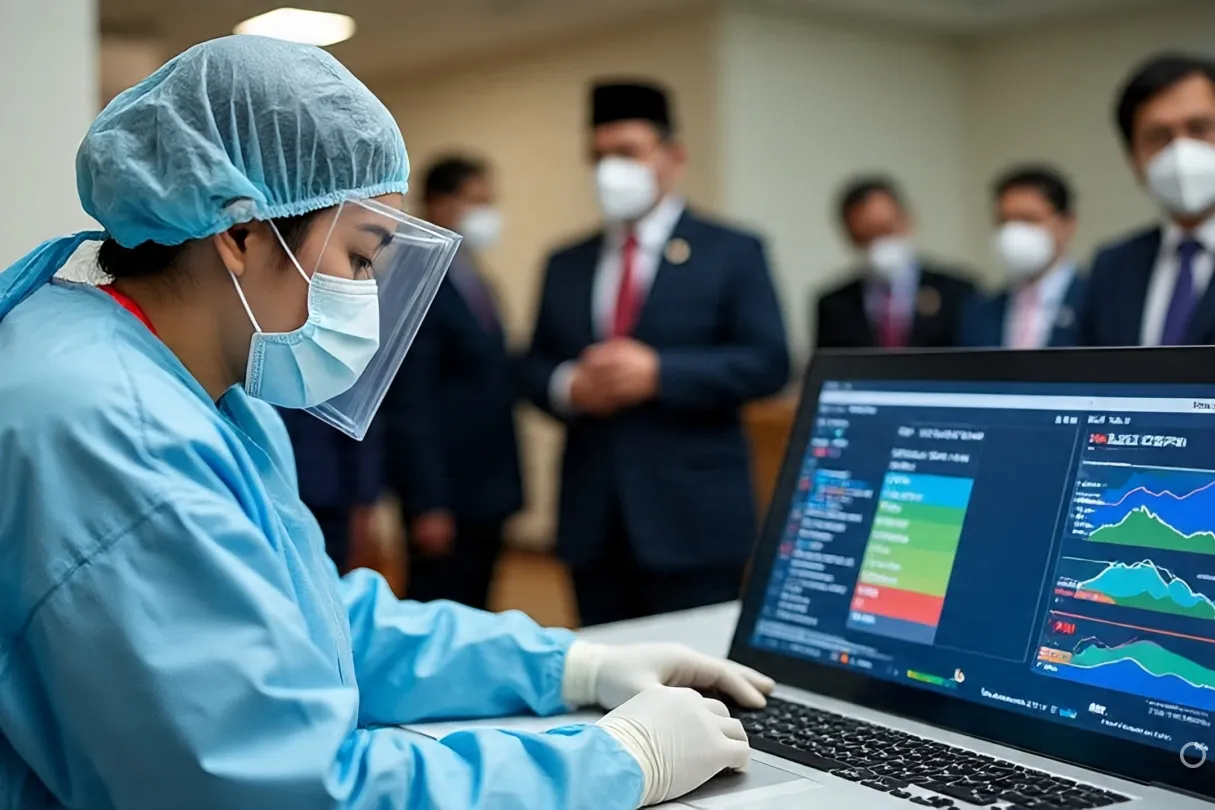📅 Malaysia’s COVID-19 timeline and political backdrop
Malaysia’s battle with COVID-19 unfolded in dramatic phases. From the initial containment in early 2020 to multiple waves that strained hospitals in 2021, each chapter of the pandemic played out under shifting political circumstances.
- 📅 Malaysia’s COVID-19 timeline and political backdrop
- 📊 Data red flags: anomalies in cases, deaths, and vaccine stats
- 🏥 On-the-ground contradictions
- 🧾 Vaccine reporting: transparency or narrative control?
- 🧠 Government’s position and expert rebuttals
- 📋 Timeline of statistical irregularities vs. political milestones
- 📢 Opposition and watchdog responses
- 🤝 International comparisons and context
- 💡 Why public trust in data matters
- 🧭 What this theory really reflects
🧾 Key pandemic phases in Malaysia:
- March 2020: First Movement Control Order (MCO) initiated after early outbreaks.
- May–August 2020: Numbers dropped; restrictions relaxed. Political maneuvers occurred behind the scenes.
- Late 2020 – Mid 2021: Massive second and third waves. State of emergency declared in January 2021.
- Late 2021 – 2022: Vaccination rollout expands rapidly; new variants emerge.
These phases weren’t just public health events—they were tightly interwoven with political developments, including the collapse of the Pakatan Harapan government, changes in prime ministers, and declarations of emergency rule that suspended parliament.
📊 Data red flags: anomalies in cases, deaths, and vaccine stats
Healthcare professionals, data scientists, and even opposition lawmakers have flagged inconsistencies in Malaysia’s COVID-19 numbers.
🔍 Key concerns include:
- Sudden statistical drops in reported cases or deaths before major political announcements.
- Inconsistent definitions for “COVID-19 deaths”—at times excluding those with comorbidities or only considering deaths after positive PCR confirmation.
- Backdated or delayed data uploads, leading to spikes that misrepresented daily conditions.
- Unexplained declines in testing rates during politically sensitive periods.
📈 A notable example was the run-up to the August 2021 power transition. Several observers pointed to declining case reports and shifting fatality definitions that conveniently painted a narrative of “improvement.”
🧠 A statistician from a public university, speaking anonymously, shared:
“Some of the 7-day average declines didn’t correlate with ICU occupancy or oxygen use rates. It looked like data management was more political than epidemiological.”
🏥 On-the-ground contradictions
Doctors and nurses working at the height of Malaysia’s COVID-19 crisis painted a grimmer picture than the official numbers.
🏨 Reported ground-level discrepancies:
- Hospitals overflowing while official ICU reports showed manageable capacity
- Delayed ambulance responses despite claims of low case numbers
- Frontliners instructed not to speak to media or share internal data
In certain states like Selangor and Sabah, reports of high excess deaths suggested significant underreporting. This was compounded by media restrictions that limited coverage of on-the-ground realities.
🧾 Vaccine reporting: transparency or narrative control?
Malaysia’s vaccination rollout began slowly but accelerated dramatically in mid-2021. By the end of that year, over 80% of the adult population was vaccinated.
📊 But even vaccine data became a point of contention:
- Changes in how “fully vaccinated” was defined (e.g., one dose vs. two doses vs. boosters)
- Lack of disclosure on expired or unused vaccine stockpiles
- Delays in publishing adverse event reports, leading to speculation of suppression
Some independent health analysts raised questions about why adverse reactions were so rarely reported publicly compared to other countries, even when using the same vaccines.
🧠 Government’s position and expert rebuttals
Malaysian authorities have consistently denied any political interference in COVID-19 data reporting. The Ministry of Health stated that all figures were validated by internal epidemiology units and reviewed before publication.
📣 Official defenses emphasized:
- Use of international reporting standards
- Publication of data via the open-access portal “COVIDNOW”
- Weekly briefings and audits by independent task forces
The World Health Organization (WHO) gave general approval to Malaysia’s pandemic response but avoided detailed commentary on the nation’s statistical transparency.
Some experts argued that discrepancies were due not to malice, but data lag, overburdened systems, and limited personnel. In chaotic times, perfect reporting is difficult anywhere.
📋 Timeline of statistical irregularities vs. political milestones
| Date | Reported COVID Anomaly | Political Event |
|---|---|---|
| Jan 2021 | Sudden case spike, emergency declared | Parliament suspended |
| Aug 2021 | Case definitions narrowed, deaths dip | PM resignation, power transition |
| Nov 2021 | High vaccination rates reported | State elections approaching |
While correlation does not equal causation, the timing of some data shifts continues to raise eyebrows.
📢 Opposition and watchdog responses
Opposition leaders accused the government of hiding behind emergency powers. Groups like SUARAM and CodeBlue published reports challenging case transparency.
Key critiques:
- Lack of third-party audits
- Shifting baselines in data definitions
- Censorship of whistleblowers in the health ministry
A former health official admitted under anonymity:
“We weren’t allowed to say the ICU was at full capacity. That would have triggered panic—and political blowback.”
🤝 International comparisons and context
Data manipulation theories aren’t unique to Malaysia. Countries like Indonesia, India, and even China faced similar accusations during the pandemic.
However, Malaysia’s case is unique due to its relatively advanced health system and a media environment that—while restricted—still allowed some level of scrutiny.
🇸🇬 In contrast, Singapore’s transparent data approach earned it higher public trust, even during unpopular policy shifts.
💡 Why public trust in data matters
Public health is built on public trust. When numbers are questioned, so is every policy built upon them.
🔎 Data distrust can lead to:
- Vaccine hesitancy
- Civil disobedience against lockdowns
- Spread of misinformation
While many Malaysians complied with SOPs and vaccination efforts, underlying skepticism lingered—especially in communities hardest hit but least informed.
🧭 What this theory really reflects
Whether or not Malaysia’s pandemic data was deliberately manipulated, the suspicion reveals deeper issues:
- A culture of opaqueness in government institutions
- Limited protection for data whistleblowers
- Weak independent oversight of public health policy
For future crises, Malaysia must invest not only in better medical infrastructure but in transparent communication and open data governance.




